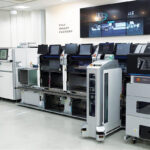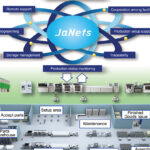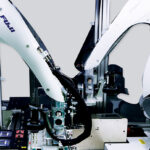ASIA ELECTRONICS INDUSTRYYOUR WINDOW TO SMART MANUFACTURING
Smart Factories Evolve, Taps Digital Twin
The evolution of smart factories continues setting sights on full automated production. Smart factories significantly improve productivity by reducing costs and working hours, elevate product quality and enhance work environment. They maximize the use of internet of things (IoT), big data, artificial intelligence (AI), and robots to improve products’ quality.
In smart factories, it has become possible to perform production changeover, failure prediction and determine the cause of failure. Production failure among machines is also determined without the human intervention, correcting the problem automatically.
Smart factories have entered the stage of autonomous factories by optimizing the production line and the entire factory. They provide values of supply chain planning (SCP) and enterprise resource planning (ERP) better than manufacturing execution system (MES).

Challenges in Smart Factory
Mounter manufacturers have begun to introduce simulation technologies using digital twin to make smart surface mount technology (SMT) lines.
In production automation, identification of processes to be automated and selection of automation equipment are common challenges.
It is important to check in advance the existing production line to maximize the effect of automated equipment installation. Here, the use of digital twin’s simulation technology proves effective.
Digital Twin in Factories
Digital twin sends information in the physical space to the virtual space in real time using IoT, and simulates the same physical environment to virtual space. It reproduces the existing SMT line in the virtual space. In the process, it visualizes issues in the mounting process considering workload on workers, which was difficult to quantify in real space.
Moreover, it can also visualize the effects of the introduction of automated machines and the changing of operation. Modelling in the virtual space enables setting of parameters for each process, including the numbers of automated guided vehicles (AGVs), components warehouses and workers, as well as working lines. Thus, enabling checking of the effects of introduction of automated machines and the changing of operation.




